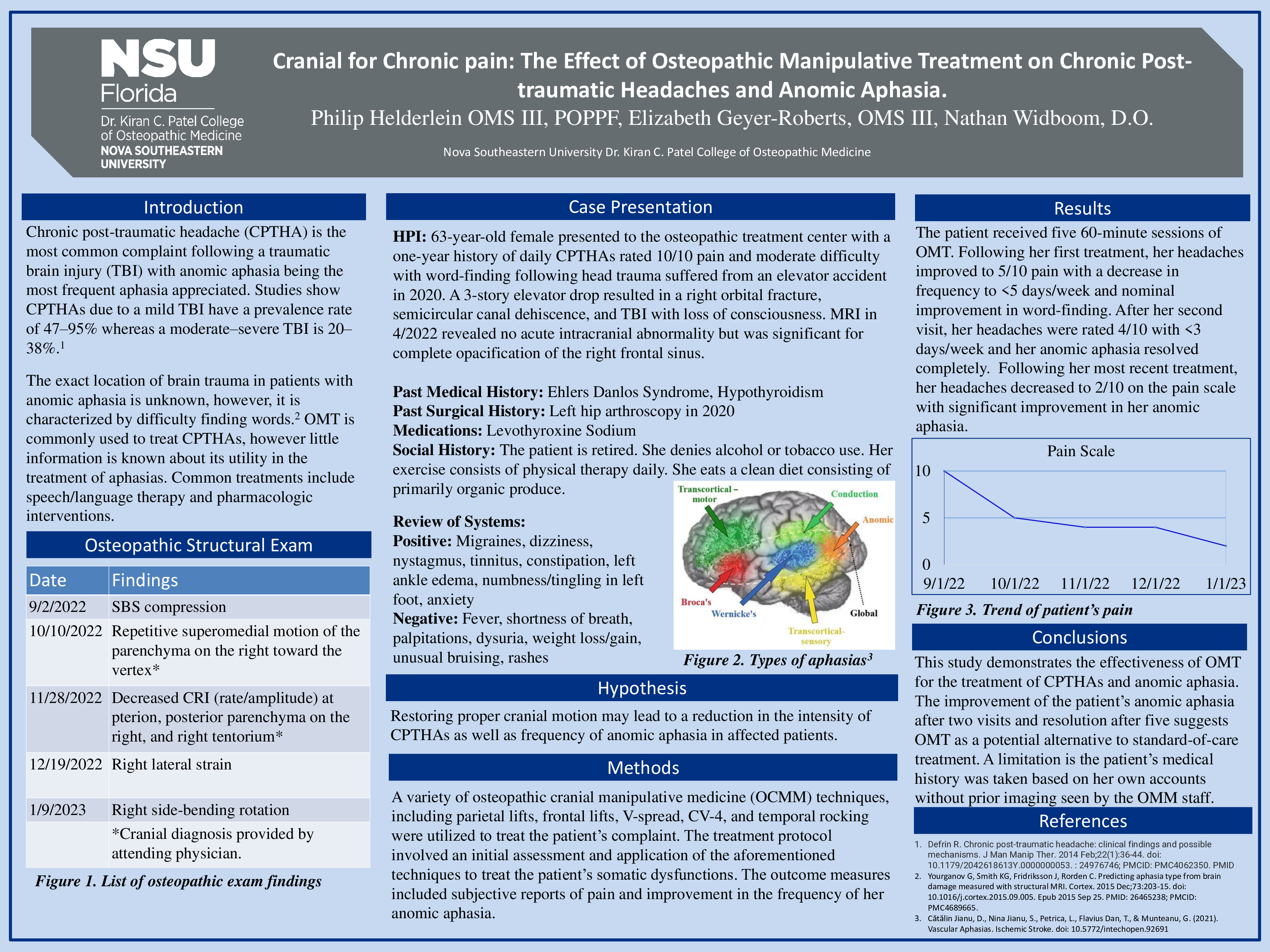Abstract
Introduction/Background:
Chronic post-traumatic headache (CPTHA) is the most common complaint following a traumatic brain injury (TBI) with anomic aphasia being the most frequent aphasia appreciated. Anomic aphasia results from damage to the frontotemporal region of the brain characterized by difficulty finding words. OMT is commonly used to treat CPTHAs, however little information is known about its utility in the treatment of aphasias. Common treatments for aphasias include speech/language therapy and pharmacologic interventions. This case-study poses the question: Is OMT a viable alternative for patients suffering from post-traumatic anomic aphasia?
Case:
63-year-old female presented to the osteopathic treatment center with a one-year history of daily CPTHAs rated 10/10 pain and moderate difficulty with word-finding following head trauma suffered from an elevator accident in 2020. A 3-story elevator drop resulted in a right orbital fracture, semicircular canal dehiscence, and TBI with loss of consciousness. MRI in 4/2022 revealed no acute intracranial abnormality. Osteopathic cranial manipulative medicine (CV-4, frontal/parietal lifts, and temporal decompression) was utilized to alleviate her headaches and improve her speech fluency.
Results:
The patient received two 60-minute sessions of OMT. Following her first treatment, her headaches improved to 5/10 pain with a decrease in frequency to <5 days/week and nominal improvement in word-finding. After her second visit, her headaches were rated 4/10 with <3 days/week and her anomic aphasia resolved completely.
Discussion:
This study demonstrates the effectiveness of OMT for the treatment of CPTHAs and anomic aphasia. The resolution of the patient’s anomic aphasia in two visits suggests OMT as a potential alternative to standard-of-care treatment. A limitation is the patient’s medical history was taken based on her own accounts without prior imaging seen by the OMM staff.






